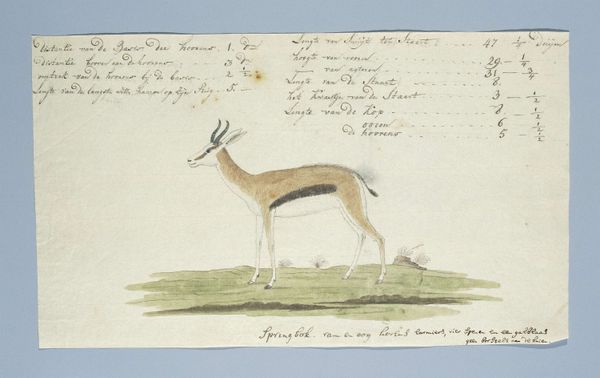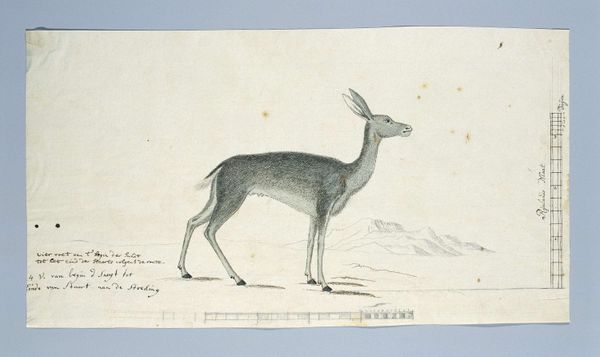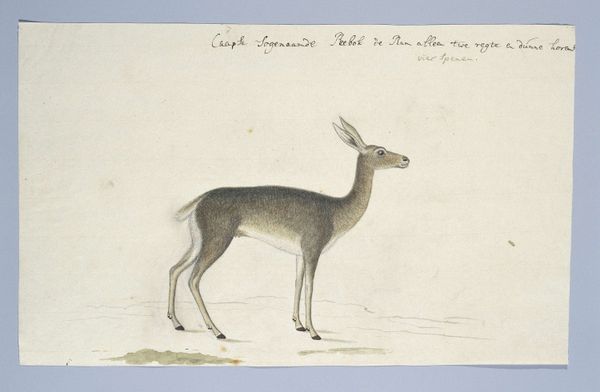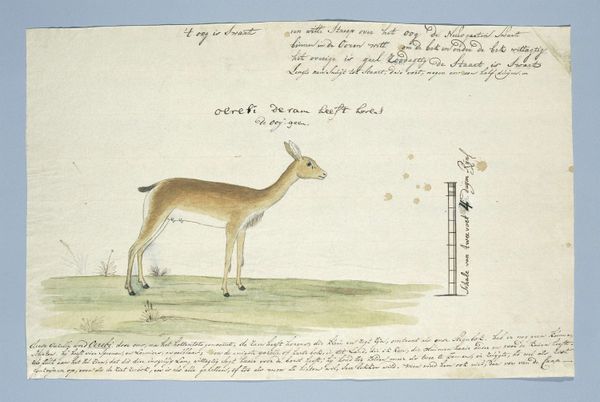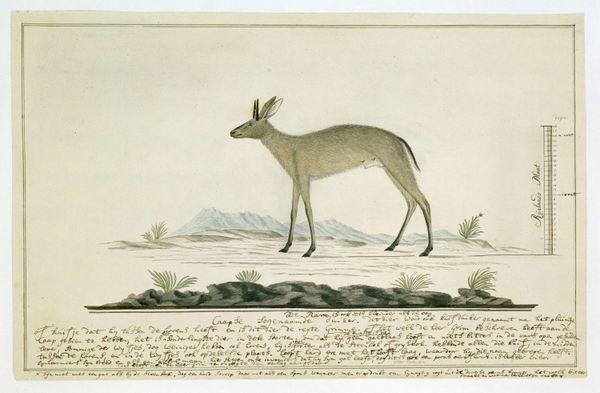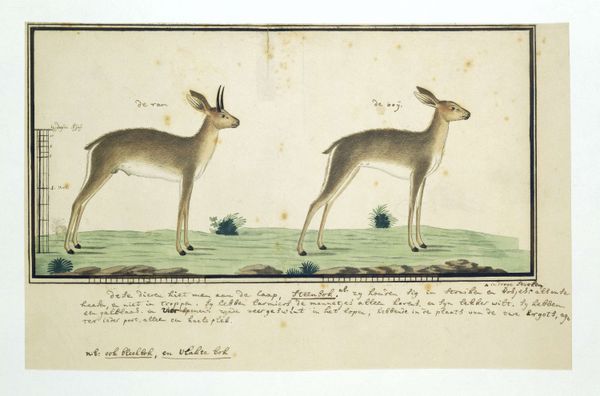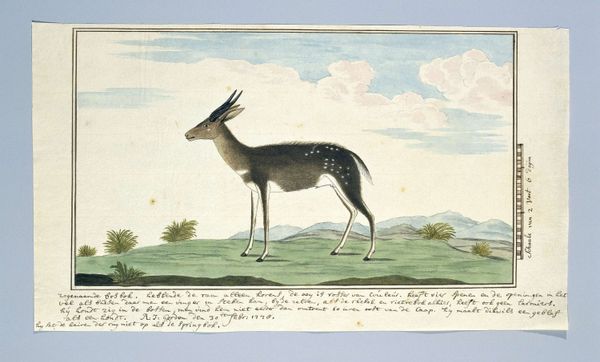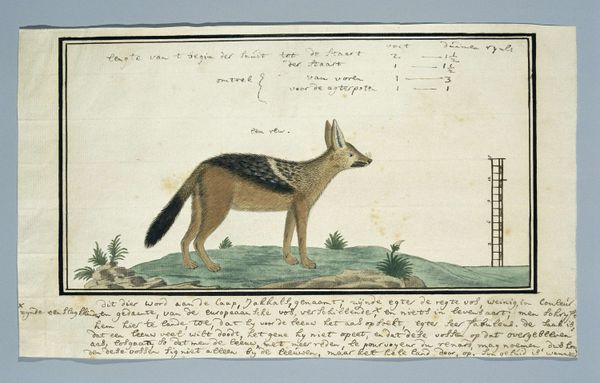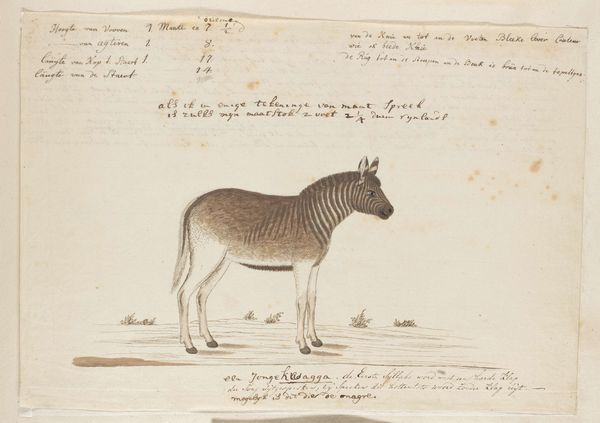
#
aged paper
#
homemade paper
#
sketch book
#
personal sketchbook
#
journal
#
ink colored
#
sketchbook drawing
#
watercolour illustration
#
sketchbook art
#
watercolor
Dimensions: height 660 mm, width 480 mm, height 242 mm, width 362 mm, height 221 mm, width 300 mm
Copyright: Rijks Museum: Open Domain
Editor: Here we have "Redunca arundinum (Southern reedbuck)," a watercolour illustration, dating probably from 1777 to 1786, by Robert Jacob Gordon. I'm struck by the economy of line; it feels almost scientific in its precision. What do you see in this work? Curator: It's an interesting synthesis of observation and representation. The artist's approach, when analyzed formally, privileges the integrity of line to convey the form and structure of the animal. Notice how the washes of colour are carefully contained within the drawn contours; the texture of the animal’s coat and the surrounding landscape are subordinate to a linear articulation. Consider also the graphic elements around the illustration, a series of notes. Do these framing lines, coupled with notations, alter your perception? Editor: Absolutely! The text transforms the image into a kind of field study, a scientific record rather than purely aesthetic object. So, are you saying the artwork's value lies in the interplay between objective observation and artistic rendering? Curator: Precisely. The structure of the work—the balance of line, colour, and textual information—creates a unique viewing experience. There is no real shading used. It’s all lines and flat colour planes. It is almost diagrammatic. Are we looking at art, or scientific documentation? The question, of course, is the point. Editor: That’s a fresh way of thinking about it. I hadn’t considered the documentation aspect so directly, or that the composition of the notational text itself influenced my perception of the artwork. Curator: These sketches offer insight into how images function beyond aesthetics; they perform specific cognitive functions. Editor: That's given me a lot to consider – thank you! Curator: My pleasure!
Comments
No comments
Be the first to comment and join the conversation on the ultimate creative platform.
